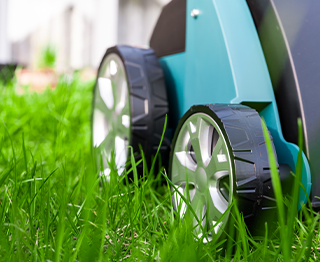
Taking care of your lawn in Feb
Spring is on the horizon and as the temperature begins to rise, it may be necessary to mow your lawn. You should do so with care, positioning the cutting height on the highest setting and ensuring that there is no ground frost and the grass is dry. Be mindful not to walk on your lawn when it is frosty as this can scorch or burn the grass, leaving behind unsightly brown footprints.
Prior to mowing, remove any worm casts from the surface of your lawn. Earthworms are useful in maintaining healthy soil, but their casts can be a nuisance. Once dry, worm casts can easily be brushed away without creating a mess, so take a few minutes to do this in order to avoid smearing the casts with your lawn mower.
If your lawn has struggled this winter and you would like to discuss our range of lawn care treatments for healthy grass all-year-round, call us today on 01502 677 019
Your questions answered
Each month, we answer your questions to help you get the most out of your outdoor environment. This month’s question comes from Andy Betts who asks:
“We’ve had a lot of rainfall recently and the lawn is very waterlogged. How can I improve drainage?”
Repeated Treatments
Thank you for your question, Andy – you are certainly not the only person to have experienced this problem recently. Depending on the severity of the situation, there are two approaches that you may wish to consider. If the lawn is waterlogged and by waterlogged, we mean boggy or spongy, there are two treatments that will certainly help.
However, please bear in mind that these measures will likely need to be repeated year-on-year before you see a significant improvement. Patience is key when you are trying to manage nature!


Aeration & Gypsum
Firstly, when conditions allow, you can aerate the lawn manually by either spiking it with a fork or using a mechanical aerator. This will help rainwater to drain down into the soil. Following aeration, we recommend spreading a layer of gypsum on the surface. Gypsum is particularly useful on clay soils to aid flocculation. Flocculation is the process of binding tiny, closely bound soil particles together to form larger ones. In doing so, it creates air gaps between the particles which in turn, enables water to drain away more easily.
The above measures are often all that is needed. However, if the grass is underwater for a sustained period of time, then it may be necessary to install additional drainage. Take care not to pipe it into your neighbour’s garden as they will hold you responsible for the damage and costs!